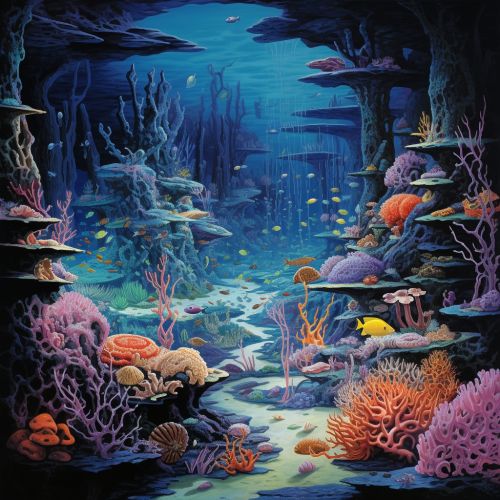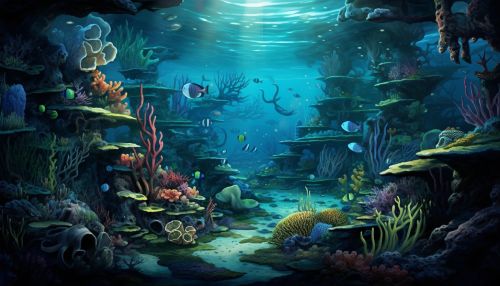The Ecology of Deep-Sea Ecosystems and Their Role in Global Biogeochemical Cycles
Introduction
Deep-sea ecosystems, which are found in the deepest parts of the ocean, play a crucial role in global biogeochemical cycles. These ecosystems are characterized by extreme conditions, such as high pressure, low temperatures, and complete darkness, which have led to the evolution of unique biological communities. The organisms in these ecosystems play a vital role in the cycling of nutrients and energy in the ocean, which in turn affects global biogeochemical cycles. This article will explore the ecology of deep-sea ecosystems and their role in global biogeochemical cycles.


Deep-Sea Ecosystems
Deep-sea ecosystems are found below the photic zone, where sunlight does not penetrate. They cover more than 60% of the Earth's surface and include a variety of habitats, such as abyssal plains, deep-sea trenches, hydrothermal vents, and cold seeps. Despite the harsh conditions, these ecosystems harbor a diverse array of organisms, including bacteria, archaea, protists, fungi, animals, and viruses.
Abyssal Plains
Abyssal plains are the most extensive and common deep-sea ecosystems. They are flat areas on the ocean floor, located at depths of 3000 to 6000 meters. These ecosystems are characterized by low temperatures, high pressure, and a lack of sunlight. Despite these conditions, abyssal plains harbor a diverse array of organisms, including polychaetes, isopods, amphipods, and nematodes. These organisms play a crucial role in the cycling of nutrients and energy in the deep sea.
Deep-Sea Trenches
Deep-sea trenches are the deepest parts of the ocean, reaching depths of more than 10,000 meters. They are characterized by extreme pressure, low temperatures, and a lack of sunlight. Despite these conditions, deep-sea trenches harbor unique biological communities, including giant amphipods, snailfish, and foraminifera. These organisms play a vital role in the cycling of nutrients and energy in the deep sea.
Hydrothermal Vents
Hydrothermal vents are unique deep-sea ecosystems located near tectonic plate boundaries. They are characterized by the emission of hot, mineral-rich water, which supports unique biological communities. These communities are based on chemosynthesis, a process in which bacteria and archaea convert inorganic compounds into organic matter. Hydrothermal vents harbor a diverse array of organisms, including tubeworms, giant clams, and vent crabs. These organisms play a crucial role in the cycling of nutrients and energy in the deep sea.
Cold Seeps
Cold seeps are deep-sea ecosystems characterized by the emission of cold, methane-rich fluids. These ecosystems support unique biological communities based on chemosynthesis. Cold seeps harbor a diverse array of organisms, including clams, mussels, and tubeworms. These organisms play a vital role in the cycling of nutrients and energy in the deep sea.
Role in Global Biogeochemical Cycles
Deep-sea ecosystems play a crucial role in global biogeochemical cycles, which involve the transformation and cycling of chemical elements and compounds between the living and non-living components of the Earth. These ecosystems contribute to the cycling of carbon, nitrogen, phosphorus, and other elements in the ocean, which in turn affects global biogeochemical cycles.
Carbon Cycle
Deep-sea ecosystems play a crucial role in the carbon cycle, which involves the cycling of carbon between the atmosphere, land, and ocean. These ecosystems contribute to the sequestration of carbon in the deep sea, a process known as the biological pump. This process involves the sinking of organic matter from the surface to the deep sea, where it is consumed by organisms and converted into inorganic carbon. This process helps to regulate the concentration of carbon dioxide in the atmosphere and mitigate climate change.
Nitrogen Cycle
Deep-sea ecosystems also play a vital role in the nitrogen cycle, which involves the cycling of nitrogen between the atmosphere, land, and ocean. These ecosystems contribute to the conversion of nitrogen into different forms, such as nitrate, nitrite, and nitrogen gas. This process, known as denitrification, is carried out by bacteria and archaea in the deep sea. This process helps to regulate the concentration of nitrogen in the ocean and atmosphere.
Phosphorus Cycle
Deep-sea ecosystems contribute to the phosphorus cycle, which involves the cycling of phosphorus between the land and ocean. These ecosystems contribute to the sequestration of phosphorus in the deep sea, a process known as the phosphorus pump. This process involves the sinking of organic matter from the surface to the deep sea, where it is consumed by organisms and converted into inorganic phosphorus. This process helps to regulate the concentration of phosphorus in the ocean.
